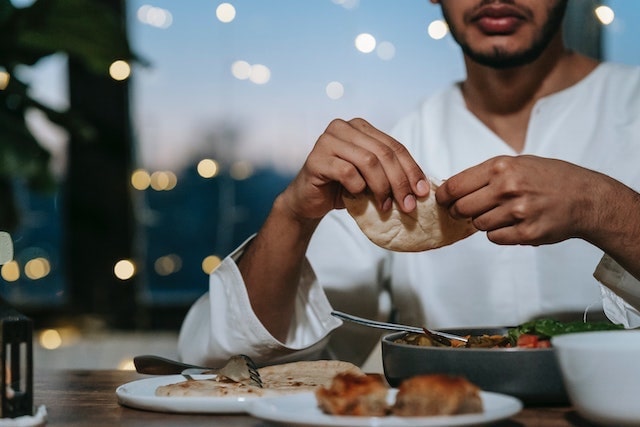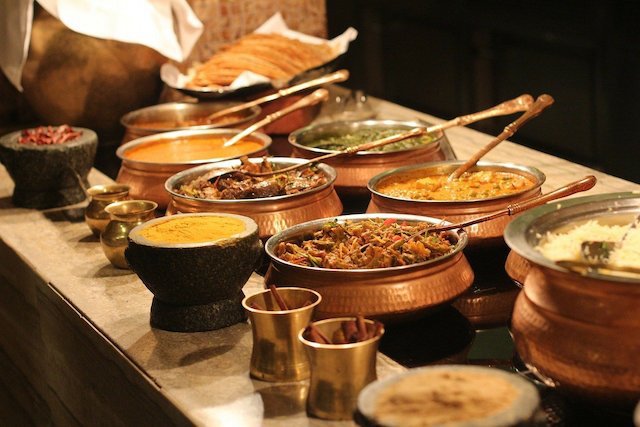The year 2020 was a tough year for the restaurant industry -- especially with heavy losses and business closures due to the COVID-19 pandemic. Because of these circumstances, many entrepreneurs are wondering if it’s even worth it to open a restaurant in India.
The pandemic brought in a huge increase to online food delivery and take-out services in India.
As per a report by IMARC Group, the online food delivery market in India reached a value of ₹325 Billion in 2020 (up from ₹216 Billion in 2019).
This shows that if you want to open a restaurant business in India, now is the time! With a surge in online food services and customers returning to indoor dining, you can easily start building your dream restaurant today. Below, we’ll show you how.
7 steps to successfully open a restaurant in India

If you are planning to open a restaurant in India, whether a small fast-food shop or a larger restaurant, the following steps will help guide you.
1. Structured business plan
Most businesses fail due to a lack of proper planning. Thus, before you open your restaurant, you need to have a structured business plan in place. This plan should include:
- Business objectives
- Set-up details
- Estimated operational costs
- A marketing plan
- Management structure and more
It’s important to decide what kind of restaurant you want to open. Your options could include:
- QSR
- Dine-in
- Food truck
- Bar or pub
- Café
- Any cuisine-specific outlet like Chinese or Italian, etc.
To help you make the right decision, consider reading market studies that reveal in-demand foods among your target audience and eating habits in your region.
Once your research is complete, you should decide on your restaurant’s name and web address.
The restaurant name will be the first impression you make to your customers, so keep it simple, relevant and catchy (more naming tips).
Also, make sure the restaurant name you wish to use is marketable and has domain availability. This is important in today’s online era, since you’ll need to launch a website for your restaurant if you want to stay relevant.
See if the domain name you have in mind is available now!
2. A relevant location
The location plays a crucial role in determining the success or failure of any restaurant. The restaurant should ideally be located in an area:
- Where there is a high demand for eating out
- That is easily accessible and visible to the customers

You should also make sure that the location has a:
- Proper water supply
- Drainage facility
- Adequate parking facility
- No Objection Certificate (NOC) from the owner of the property
An NOC states the owner has no problem leasing his space for a food business.
3. Registration and license required
The licenses and approvals required to start a restaurant depend on the location where you will operate the restaurant. However, the basic registration and licenses required to open a restaurant in India are:
- Business registration
- Professional tax registration
- Goods and Service Tax registration (GST)
- Food license from FSSAI
- Local municipal corporation health license
- Trade or eating house license
- Fire license
Depending on the type of restaurant, you may also need to provide additional licenses.
For instance, you may need a license for selling liquor or playing music in your restaurant.
It is highly recommended to consult a local agent who is aware of the regional regulations. This will make it easier to obtain all the licenses required for starting a restaurant business in India.
Based on the current COVID-19 crisis, you may also need to meet additional guidelines. For instance, many restaurants have had to follow additional hygiene, safety measures, and social distancing guidelines set forth by the government.
4. Skilled and trained workers
The secret to a successful restaurant is often an efficient team, especially the kitchen staff.
Imagine a restaurant has everything to offer, but lacks in food quality. Hardly anyone would want to visit. Hence, your kitchen staff must be properly trained in the desired cuisine you intend on serving to customers.

Along with kitchen staff, you also need good servers and management staff that have all the necessary customer service skills. It’s important to ensure all staff members are hygienic and well dressed in uniforms for a grade-A customer experience.
Lastly, you’ll need to develop a good relationship with wholesale food suppliers and other vendors to ensure a steady flow of business essentials.
5. Interiors and menu design
The interior design requirements depend on the type and theme of your restaurant.
If the theme of your restaurant is Bollywood, then you need to have pictures of famous Bollywood actors or dialogue on the wall.
The interior of the restaurant should broadly include:
- Flooring
- Wall decoration
- Ceiling
- Lighting
- Music
- Furniture
Along with the interior, your restaurant menu also needs to be carefully designed. An attractive and unique menu can grab the attention of your customers, which can turn out to be quite profitable.
In the initial few years of business, the pricing of your menu items should be based on market rates with a very small profit margin. In the food business, gathering fame and popularity is more important than money. Eventually, sales will follow.
6. Kitchen and other equipment
Restaurants require a professional set-up with full commercial kitchen equipment and tools required for cooking and serving customers. This could include things like:
- Large ovens
- Freezers
- Burners
- Blenders
- Crockery sets
- Utensils like fry-pans, knives, cutting boards, etc.
Along with kitchen equipment, you’ll also need at least one landline phone and a customized point of sale (POS) software. A POS system will help you keep track of things like daily accounting and stock inventory.
7. Good marketing campaign
The last and final step to open a restaurant in India is marketing. In India, you can find restaurants in every nook and corner. A good marketing campaign will help you to stand out from the crowd.
Some good marketing strategies include:
- Pamphlets
- Billboards that attract your audience
- Paid ads (for both printed collaterals and online platforms)
- Blogs that showcases photos or videos of your food
- Social media platforms (like Facebook or Instagram)
Building your restaurant’s website (and making it mobile-friendly) would tremendously help your marketing efforts. GoDaddy’s do-it-yourself sit builder, can jumpstart your online restaurant business and get you noticed.
Start a restaurant with confidence
To open a restaurant in India requires proper planning and dedicated implementation to get long-term success. Make sure you research your target audience, the region you intend on operating from, and all the necessary rules and regulations before starting your restaurant business.
Starting a restaurant takes a lot of planning and patience. But with the right support and resources, you can easily benefit from the multitude of opportunities the food industry has to offer. So, go forward in your new restaurant venture and refer to this business recipe along the way.





